#greeks of minor asia
Note
I used to live in Konstantinoupoli, my family had survived every genocide and pogrom until we had to flee after the 2016 coup attempt. Our house was in our family for many generations. Once when i was a kid, i layed under the coffee table and found my mom and her siblings names written there, so i added mine, and so did my siblings.
There is a new priest in our local greek church, and he found my great great grandfathers journal stored somewhere there (it dates 1912-1923), after reading it the priest decided that he wants to return it to my family, in the journal, the priest found the adress and visited the home to find the turkish family that now lived there. The family told them how long they live here, how the came to acquire the house, and that they know that a greek family lived there before them because their son had found greek letters under the table. The priest asked to take a look at them, and saw the names and matched some of them with the ones in the journals ( we are lucky we pass on our first names religiously in the family).
The church the priest belings to, that we once belinged to too, is right next to a synagogue (the place i grew up was amazing all the religious buildings are in one block, so we the jews and the armenians were extremly tight, as the 'others'). The priest spoke to the rabbi about this, and the rabbi from our home and first names remembered the surname the family survives as today and the city we had said we will move in.
Despite us not being pontiacs, the priest talks with our local pontiac community group, hoping that they will help fellow anatolians, and gives the info he has gathered about us. And they found us indeed! We came into contact with the priest that told this whole tail to our grandma, she now has her grandfathers journal where he talks about how he and his family managed to survive the genocide and stay in their land.
All my family cant shut up about it. Its been an emotional month for us since we started reading the journal and how it came to our possetion again. My grandma said somehow still managed to scold her middle aged children plus us for ruining 'her table'.
Not sure why i tell this, sorry for the long text, i just wanted to keep sharing this story with people, here in mainland there seems to be the idea that all modern anatolians are only distantly related to the refugees, but our community is still very alive and kicking, and pulling this kind of bullshit to keep surviving our legacies.
That's such a great story! 😭 It made my whole night when I read it, having at least one house my refugee family never returned to. It sounds like a fairlytale - for the positive things, like the family names written on the table, how people tried to find you because of this this little thing, and different communities interacting so that you get this journal!
No matter where we are, we are thriving! Our families have survived so much and we are living proof of their endurance! I'm so happy for you, guys!
(Of couuuurse the yaya scolding was inevitable 😂)
#answered#how do i tag this idk but I'll try#greeks of minor asia#and#Greek genocide#pogrom#Anatolian greeks#Konstantinoupoli
58 notes
·
View notes
Text

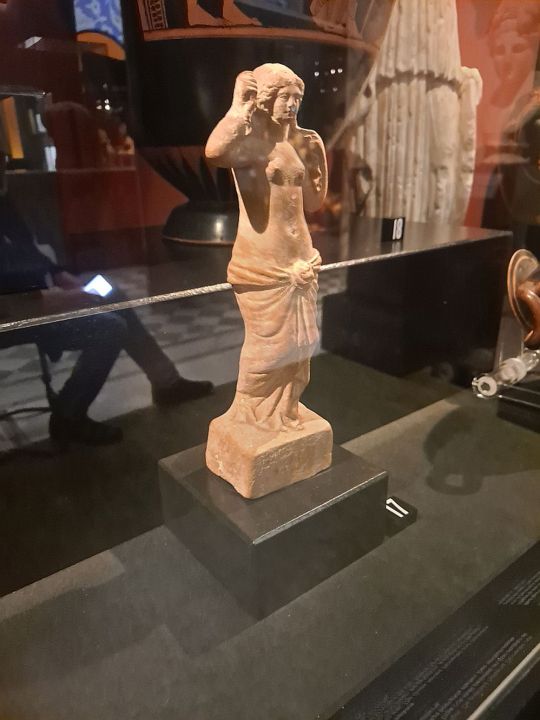

Aphrodite
* Asia Minor
* 300-100 BCE
* terracotta
* Medelhavsmuseet, Stockholm
Stockholm, November 2023
#Aphrodite#goddess#ancient#Greek#art#terracotta#statuette#2nd century BCE#3rd century BCE#Asia Minor#Medelhavsmuseet Stockhom#Swedish Museums#my photo
227 notes
·
View notes
Photo

Greek embroidered scarf from Nigde of Cappadocia (Turkey).
Photo: Studio Kominis
Source: lykeionellinidon
#tradition#historical fashion#traditional clothing#folk clothing#embroidery#fashion#vintage#nigde#cappadocia#cappadocian greeks#anatolian greeks#greeks of asia minor#greek culture
1K notes
·
View notes
Text

Antique city of Hierapolis
above Pamukkale, Asia Minor, Turkey. Destroyed by an earthquake in 1334. Photo taken during a visit in 2006 with my first viable digital camera (a Kodak).
#hierapolis#antiquity#ruins#ancient greek city#turkey#photographers on tumblr#original photographers#digital photography#Pamukkale#architecture#phrygia#asia minor#travel#travel photography#destinations
104 notes
·
View notes
Text
Names of the Greeks
Let’s do a deep dive into the different ethnonyms for the Greek people. As a matter of methodology, we will be focusing primarily on Greeks from Greece rather than highlighting individual identities: e.g. Cypriots, Cappadocians, etc. Furthermore, one asterisk equals the term for the language and two for country.
Homeric and Mycenaean
Two main names used: Achaeans and Danaans which are echoed in the Bronze Age accounts of Greeks, but these are not used to represent the whole of Greek people in the modern day. Both terms have possible parallels in two groups of sea peoples recorded by the Egyptians: Danyan and Ekwesh. Achaean also is also potentially paralleled in Hittite sources.
Danaans - Δαναοί
𓂧𓄿𓇋𓋔𓇋𓅱 (d3iniw) - Medinet Habu
Ἀχαιοί (Ἀχαιϝοί)
𓇋𓀁𓏘𓄿𓍯𓄿𓆷𓄿 (iḳ3w3š3) - Merneptah, Kanak
** 𒄴𒄭𒅀𒉿(Aḫḫiyawa) or 𒄴𒄭𒅀 (Aḫḫiya)
Hellenes
The ancient Greeks would largely refer to themselves as Ἕλλην. Later, under Christianity, this would become synonymous with pagan, so it declined in usage throughout the Roman and Byzantine periods but didn’t disappear. During the revolution from the Ottomans, leaders called for the revival of the term, wanting to emphasize the relationship to Ancient Greeks.
Ἕλλην - Ancient Greek
Έλληνας - Modern Greek
Ελ̣ηνικέ - Tsakonian
Έλλενος - Pontic
*Ελλενικά - Pontic
Ελινικάνο - Romani
Greeks
The term Greek is largely an exonym that stemmed from Latin. The first Greek tribe that the Romans came into contact with was the Γραικοί (Graeci). This would spread into most languages to describe the Greeks. The only modern endonyms coming from this term is from the Southern Italian Greeks. There was an Italian loan present in Smyrniot, but it was one of a few. Kaliarda similarly featured an Italian loan for Greeks. Aromanian features the term as an exonym, but it is spoken in Greece so will be listed. (Sarakatsani does have Γρικιά listed as the word for Greece, but the textbook does not elaborate the usage)
Griko - Salento
Grèko/Grecanico - Calabrian
Γκρέκος - Kaliarda
Γραικός - Smyrniot
Γκρέκου - Aromanian
Grek - Tsalka Urum
*Grecheski - Tsalka Urum
**Gretsia - Tsalka Urum
Roman
Coming under the Roman empire and gaining citizenship, the Greeks adopted the term Ῥωμαῖος. This maintained the most common ethonym until Greek independence. When Byzantine territory fell, the Turks and Arabs adopted the term Rum for the territory and the Greek Orthodox christians (e.g. Greek Orthodox Patriarchate of Antioch (Arabic - بطريركية الروم الأرثوذكس في أنطاكية) or The Greek Orthodox Patriarchate (Turkish - Rum Ortodoks Ekümenik Patrikhanesi). The term survives until the modern day in Eastern Greek populations (Anatolian, Ukrainian, Caucasian, etc). These often distinguish Greeks from Greece from these Eastern Greeks. One derivative, Urum, denotes Turkophone Greeks in Ukraine and the Caucasus.
Ρουμαίος - Sarakatsani
Ρωμανιώτης/רומניוטי - Romaniote Jewish
*Ρωμανιώτικα/רומניוטיקה - Romaniote Jewish
Ρωμιός - Constantinopolitan
Ρουμιός - Lycian
رومیکا - Cappadocian (Rumi)*
Ρωμνός - Axenitic
*Ρωμάικα - Axenitic
Ρωμνιός - Aravaniot
Ρωμός - Pharasiot
Ρωμαίος - Pontic
*Ρωμαίικα - Pontic
Румеюс/Ромеюс - Mariupolitan
*Румэку/Румеку - Mariupolitan
Romeyos - Romeyka
**Romeyka - Romeyka
Ρούμ/Οὐρούμ - Karmanlidika
*Ρούμδζε/Οὐρούμδζε - Karmanlidika
**Ρουμιστάν - Karmanlidika
Urum - Cypriot Turkish
Урум/Ουρούμ/Urum - Crimean Urum
Urum - Tsalka Urum
Ουρούμιν - Pomak
Ionian
Similarly to Greek, the term Ionian stems from the Persians first coming into contact with the Ionians or Ἰάϝωνες (𐎹𐎢𐎴 /yauna/). Thus, most Eastern languages will use a derivative of this despite many coming into direct contact with Alexander the Great and later diadochi: Persian/Arabic - یونان (Yunan), Pali - 𑀬𑁄𑀦 (Yona), Sanskrit - यवन (Yavana), and Chinese 大宛 (Dayuan, Great Ionians). While this does not refer to Greeks as a whole, the word Ionian was first attested in the Bronze Age with the Egyptian ‘Great Ionia’ or 𓇌𓅱𓈖𓏭𓉻𓂝𓏛 (ywnj3’) and the Mycenaean word 𐀂𐀊𐀺𐀚(i-ja-wo-ne). As for modern endonyms, there are two interesting examples: Karamanlidika and Judeo-Greek which use both Roman and Ionian. For Karamanlidika, Γιουνάν refers to Greece rather than its native Greeks (Ρουμιστάν was listed for Greece, but Γιουνανιστάν is the more standard term). Cappadocian Greek and Smyrniot, in term, adopted the Turkish term for Greece (though Smyrniot also had other loans for the word). Judeo-Greek, however, has taken Yevanic to refer to the register to liken it to Ladino and Yiddish. It takes the Hebrew יון (Yevan) meaning Ionian and re-Hellenizing the term to have the -ιτικά ending.
Γιουνανλής - Smyrniot
**Γιουνανιστάν/Γιονανιστάν - Cappadocian Greek
Γιουνάν/Γιουνανλή - Karamanlidika
*Γιουνάνδζα - Karamanlidika
**Γιουνανιστάν - Karamanlidika
*Γεβανιτικά/יווניטיקה - Judeo-Greek
Others
Ραγιάς (slave) - Potamiot Cappadocian
Σ̈κλα (foreigner) - Arvanitika
*Σ̈κλιερίσ̈τικα/Σ̈κλιερίσ̈τε̱ - Arvanitika
Καλαμαράς (squid, coming from mainland Greek scholars using squid bones as pens) - Cypriot Greek
*Καλαμαρίστικα - Cypriot Greek
**Καλαμαρκά - Cypriot Greek
Kalamara - Cypriot Turkish
Χαουτίκ - Cypriot Arabic
#greek#greek language#hellenic languages#language#tsakonian#griko#cypriot#greece#ancient greece#mycenaean greek#ancient egyptian language#asia minor greek#judeo greek#yevanic
13 notes
·
View notes
Text
Artemis Quick Facts
Some of my notes from the books and papers I've read about Artemis.
In the 2nd century at the capital of the Roman province of Asia, Ephesus, Artemis was publicly declared to be "forever the greatest of all the gods".
Her name's etymology is unknown, likely pre-Greek. Her name was popularly believed to mean "healthy", meaning she makes people feel safe and healthy.
Artemis was extremely popular goddess, one of the most popular Greco-Roman gods.
Pausanias notes: "But all cities worship Artemis of Ephesus, and individuals hold her in honor above all the gods…" (4.31.8)
Dr. Rietveld described Artemis Ephesia as an "universal goddess".
Artemis subsumed and was amalgamated with many goddesses, including Kybele, Hekate, and Isis.
She was widely seen as a compassionate and loving god, as she’s always willing to listen and respond to the needs of her people.
She was popularly seen as a goddess of protection and life.
She was famous throughout the Roman Empire for her vivid manifestations, in real life and in dreams.
Hence many sanctuaries, shrines, altars, and temples were built in her honor.
From countless thanksgiving writings she was called "Our Lady".
Her sanctuaries and temples were typically asylum sites.
She's the only Greco-Roman god with the Zodiac on her cult image.
Hence as "Queen of the Cosmos" she has transcendent powers over the cosmos, and Fate.
As Mistress Salvation, Artemis can save her people from their unfortunate fate. It's possible that through the mysteries she can give people a blessed afterlife.
The relationship between Artemis and her worshippers was a divinely directed covenant relationship, born out of genuine affection towards Artemis.
Popularly Called: Queen of the Cosmos, Heavenly Queen, Savior, Our Lady, Mistress Salvation, and Fate Goddess.
Thank you for reading, I hope you enjoy this and learned something new about Artemis.
Sources:
James Rietveld’s “Artemis of the Ephesians”
Mary Gabrielle Galvin "BIOΣ ~ APTEMIΣ"
Richard Oster’s “The Ephesian Artemis as an Opponent of Early Christianity”
Margaret C. Mowczko’s “The Regalia of Artemis”
Paschidis' "Artemis Ephesia and Herakles"
Chaniotis' "Megatheism"
#artemis#greek gods#hellenic pantheon#ancient rome#diana goddess#roman history#anatolia#asia minor#ancient greek#roman mythology#classical mythology#classical period#hellenism#ephesus#ionia#greek mythology
155 notes
·
View notes
Text


Roza of Smyrna (2016) dir. Giorgos Kordelas
#greece#greek#greek cinema#turkey#turkish#hagia sophia#istanbul#constantinople#romance#byzantine#christian#asia minor#anatolia#greeks#cinema#movies#greek movies#2016#roza of smyrna#movie stills
12 notes
·
View notes
Text
For #WorldTurtleDay on a #TurtleTuesday + #TwoForTuesday: what does this unusual 18th c. English portrait have in common with this early 20th c. Ottoman one from Pera Müzesi? More than you may think! 😉Find out more on the blog:
ANIMAL ART OF THE DAY for World Turtle Day: an unusual tortoise portrait from 18th Century England, and its connection to Ottoman Turkey
https://arthistoryanimalia.com/2023/05/23/animal-art-of-the-day-for-world-turtle-day-an-unusual-tortoise-portrait-from-18th-century-england-and-its-connection-to-ottoman-turkey/
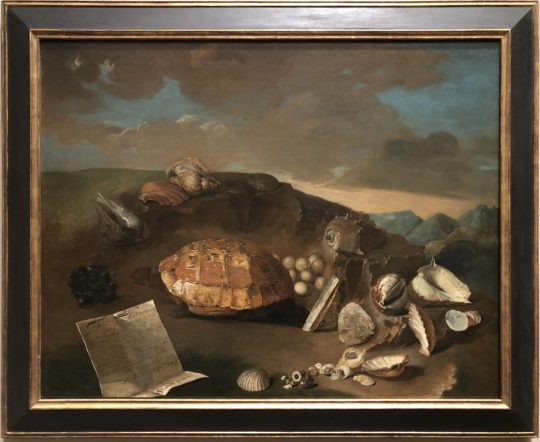
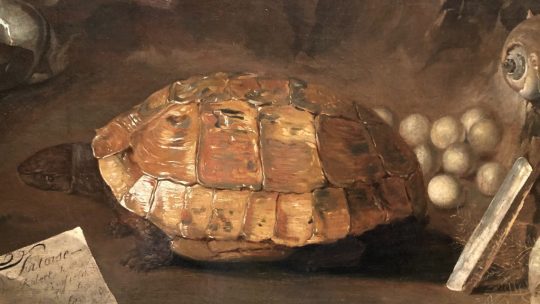
Still Life With a Tortoise, 1743
possibly by Thomas Black (English, 1715-1777)
oil on canvas, 74.9 x 96.5 cm
Philadelphia Museum of Art

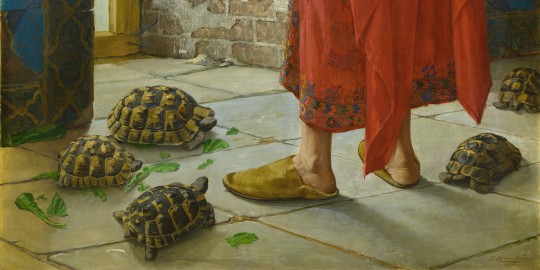
The Tortoise Trainer, 1906 version
by Osman Hamdi Bey (Ottoman, 1842-1910)
oil on canvas, 221.5 x 120 cm
Pera Müzesi
#Asia Minor Tortoise#England#Europe#Greek Tortoise#herpetology#ID#museum visit#oil painting#Osman Hamdi Bey#Ottoman#painting#Pera Museum#Philadelphia Museum of Art#Thomas Black#tortoise#Turkey#turtle#World Turtle Day.#Pera Müzesi#20th century art#18th century art#animal holiday#animals in art#Turtle Tuesday#Two for Tuesday
21 notes
·
View notes
Text





#asia minor#greek revival#greece#history#teacher#books and reading#international#native american#africa
5 notes
·
View notes
Text

Byzantine Liturgical Cross. Asia Minor.
8th or 9th Century CE.
The Walters Art Museum.
#culture#art#history#medieval#byzantine art#byzantine empire#byzantine#greek#roman#East roman#anatolia#asia minor#middle eastern history
5 notes
·
View notes
Text
Exploring Greece in the Pre-Homeric Era

View On WordPress
#aegean#Agamemnon#archeaolgy#archeology#art#asia minor#corinth#crete#culture#cyclades#egypt#epic#german#greek#helen#history#homer#homeros#iliad#knossos#mesopotamia#minoan#minoan crete#mycenae#poem#prehistoric#Schliemann#travel#troy#turkey
2 notes
·
View notes
Text

Greek traditional clothing of Ikonio, Minor Asia, by Studio Kominis.
15 notes
·
View notes
Text
Todays insanity in ac is the origins tour where you can tour the very beginnings of the 40s in Alexandria and you can change your character to Cleopatra so that you’re walking around watching animations of yourself and Caesar walk through the palace like following yourself around. That’s like a haunting to the third exponent or something
#second insanity is them saying that Alexander struck out to RECLAIM Greek cities in Asia Minor SCREAM????#IF YOURE READING THE MACEDONIAN PROPAGANDA AND HES READING THE MACEDONIAN PROPAGANDA WHOS HOLDING THE PS4 CONTROLLER
7 notes
·
View notes
Text

The desecrated Greek cemetery of St John the Baptist during the massacres of Smyrna, 1922 (now Izmir, Turkey). Source: Wikipedia.
Today, May 19th is the day of the remembrance of the Genocide of the Pontic Greeks. Pontus is the coastal region in the northern center of Turkey. Smyrna is in the westernmost coastal region and the associated Asia Minor Catastrophe (also known as the Great Fire of Smyrna) is commemorated on September 14th instead. However, I saw this photo and it touched me deeply and I couldn't just wait and queue it for four months later. The truth is that the sufferings of the Greeks of Asia Minor took place throughout that vast land.
#history#greek history#pontic greek genocide#great fire of smyrna#asia minor catastrophe#greeks of asia minor#pontic greeks#cw morbid#cw death#cw violence#black and white photo#black and white#1922
93 notes
·
View notes
Text
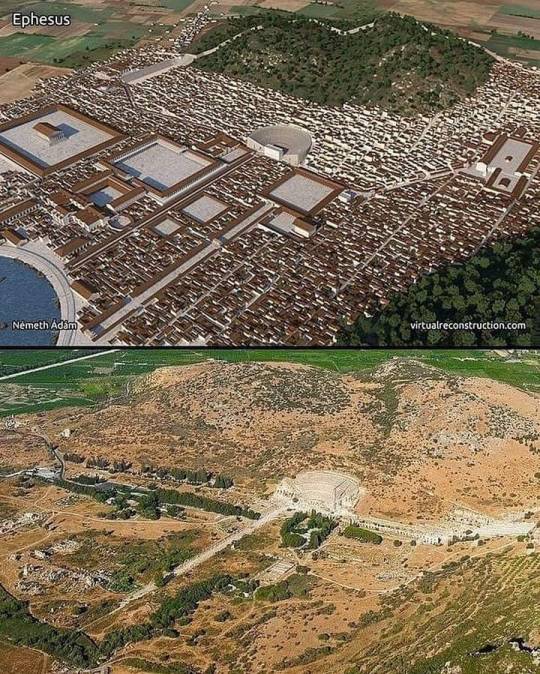
0 notes
Text
Artemisia: The Holy Days of Artemis
In Ionia and Crete had their New Year’s on the spring equinox, the month Artemisios (Artemision in Ephesus), which is associated with the Zodiac Aries. Later during the reign of Augustus, the New Year’s was changed to Libra, the month of his birthday.
Regarding festivals and celebrations, according to Mary Galvin in her “BIOΣ ~ APTEMIΣ” described common elements of Artemision festivals were “…eating and drinking, singing and dancing, precessions, competitions and sacrifice were common activities despite local variations…” (Vol.1-1, page 243). Night time festivals for Artemis were quite common.
The 6th day of every month is devoted to Artemis. Also in Ephesus, every night of the full moon and new moon is an Epiphany celebration that featured an appearance from Artemis to people celebrating.
Artemision
Zodiac: Aries; Spring Equinox; 2023: March 20th – April 20th
Also known as Artemisios. The New Year starts off with a bang! In ~162 AD it was declared that the month, named after Artemis is sacred and no public business will be allowed.
An annual pan-Ionian festival, “Ephesia”! It was held at Panionium from the 6th to 5th centuries BC, then it was moved to Ephesus. Nocturnal festival full of competitions and banquets involving the youth. It was also characterized by choral dancing and other musical competitions. Women and children were also especially encouraged to participate.
Artemisia festival. Month long festival with processions, sacrifice, music, dancing, and competitions. It featured a torch race and winners dedicated their success to Artemis.
A marriage festival was featured in Xenophon’s Ephesian Tales. Young men and women from and around Ephesus choose their spouse. After the young adults found their partner they’ll dress up in elaborate and colorful clothes and go on a procession to the Temple of Artemis. They are accompanied with music and dancing, sang hymns to Artemis with her images surround the procession. At the Temple they newlyweds confirmed their marriage with a sacrifice to Artemis.
The beginning of Spring marks the opening of the port of Ephesus after it was closed during winter. At the harbor an image of Artemis was brought from the Artemision and cast it into the water. They believed that her power would protect sailors, navigators, and people traveling on the sea. Artemis Ephesia was known as the “Queen of the Sea”.
Numerous other festivals were observed throughout the month making the entire month practically a “Holimonth”, as the days were called “Holy Days of Artemis”.
Richard Oster states: “We can be sure that this was one of the largest and most significant celebrations in Ephesus’ liturgical calendar”.
The observation of the month was taken very seriously, even Roman officials weren’t immune to criticism when some of them were seen as impious towards Artemis’ holy days. The numerous festivals brought many tourists that brought significant income to Ephesus.
Lastly, on the sixth day the there’s the Elaphebolia. Hyampolis celebrated their victory against the Thessalians, thanks to Artemis. People enjoyed offering and eating deer-shaped cakes with honey and sesame.
Notes taken from:
Riteveld’s Artemis of the Ephesians
Mary Galvin’s BIOΣ ~ APTEMIΣ
2023 Dates: https://www.yourzodiacsign.com/calendar/2023/
#artemis#greek gods#ancient rome#diana goddess#roman history#anatolia#asia minor#ancient greek#roman mythology#classical mythology#classical period#hellenism#ephesus#ionia#greek mythology#ephesians
52 notes
·
View notes